Over the next few weeks we'll be migrating the Contemporary Craft blog to Tumblr. Head on over and tell us what you think!
Monday, April 29, 2013
Tuesday, February 26, 2013
Contemporary Craft: An Odessey
We recently had three consecutive weekends with ceramics workshops- taught by visiting artists Kevin Snipes and Sharif Bey (who grew up in Pittsburgh), and Yoko Sekino-Bove, (Japanese born and now resides in Washington, PA). Some students from the Manchester Craftsmen’s Guild were given scholarships to attend these various workshops, and so we met Nikki. Nikki’s an inquisitive and imaginative young lady that MCG sent our way, who initially questioned the validity of ‘contemporary’ craft. Our artists helped her to understand what contemporary is and can be. Here you will read Nikki’s journey through the mystical land of contemporary. (I’m starting to think our studios lead to Narnia or Oz.)

Great were the white stone walls that encased our city on all sides,
And great were the efforts to recreate such perfection.
Beyond our realm was not known nor explored,
For the inhabitants of our determined city,
Had brought about a need for flawlessness in great confection.
Hours and hours upon end, we each sat at our wheels,
Robotic hands born of the wondrous place,
And tried, tried desperately, to bare the magic
That had come of these walls that reached into the sky,
As white and gallant as bridal lace.
And then one day, to my surprise,
People began to lift hands, to touch the sky.
Few, rare was the man that scaled the walls,
And looked onto the other side.
What could there be after perfection?
I had counted three people, who’d mastered the white walls,
Before deciding to see the heights for myself.
Several attempts before I could climb to the top,
And finally, I sat on the freezing ledge.
I first peered down upon the frantic and striving.
I then turned my back, and gaped in awe, at all the color.
I looked back one more time, before deciding,
I’d had enough perfection to last a lifetime.
Down I fell to the new grounds,
Unsettled, unstable, innovative, incredible.
The land was a desert. The word ‘Contemporary’
Had been scrawled in numerous hands among the sand.
What had it meant? Entirely lost, I’d seemed to be,
In a nonsense world, where everything was what it wasn’t.
‘Contemporary’ was beyond my realm. Certainly not perfect.
Sand became canvas as time wore on, someone taking the opportunity
In stride, gangly figures hanging in picturesque color,
Almost coming to life, reaching out for it.
Faces had not been proportional, and objects held no meaning.
There was no message for me here, no perfection.
Inside a cave I met the man behind the figures.
Kevin Snipes, he’d introduced himself as.
“What do your pictures mean?” I dared to ask.
“Well, this one,” he said, pointing to a painting of a man
With limp arms and a woman looking the other way,
“Represents the tension between a man and a woman,
The awkwardness and misunderstanding between the sexes,
And how that affects themselves, each other, their world.”
And suddenly, ‘Contemporary’ had meaning, had reason.
Was not useless, but instead beautiful,
For his art had no function, but served purpose greater than that
Of a bowl or a plate. ‘Contemporary,’ now shared
Ideals and philosophies, observation in artistry.
I thanked Kevin for his insight,
And went about on my way.
Music seemed to twinkle in the wind,
And grew louder as it howled
And sand turned to snow.
But the musical inspiration drowned
In the wake of a hammer and a nail,
Residing in a nearby cabin,
No perfect walls.
I knocked on the door. Scratched in it was ‘Contemporary.’
Why was ‘Contemporary’ entirely present in the realm outside perfect?
I pondered the query as the door swung open.
A great bearded man answered, clay faced and hammer in hand.
Sharif Bey, he introduced himself as.
1,000 pinch pots lay strewn on the floor,
And nails protruded from ceramic heads.
“Why,” I dared to ask.
“Makes them more interesting,” he said in response.
“Why would I want to do the same thing as the guy next to me?
I want to be unique.”
Innovative. Conceptive. Interesting. Unique.
This was contemporary.
I thanked Sharif and went on my way,
Though not entirely sure of my way anymore.
The snow melted as my feet trudged on,
The crunch of ice replaced with that of leaves.
On the forest floor,
I met a woman, black hair, skin fair,
Attempting to place intricate leaves on a cup,
That was lovely, yet imperfect.
Yoko Sekino-Bove, she called herself.
“What are you doing,” I dared to ask.
“Well you see, curious child, that this cup is not perfect.
It is close, close enough, but the artistic design is what
Makes a ceramic piece interesting. Therefore I take
My love of color, and use it to make near perfection,
Perfect art.”
I saw now. I understood ‘Contemporary,’ everything it was, and it wasn’t.
I thanked Yoko for her insight, and went back from whence I came,
Entirely sure of my way.
My feet trudged once more in the direction of the snow,
Then sand, then magnificent white wall.
Looking at this strong, stable wall,
It seemed plain and meaningless,
A functional piece with no beautiful use
Seemed more worthless than the entirely
Glorious world of color that lay outside the realm
Of perfect.
Upon re-entering the boundaries of the wall,
I saw a sign. It read, “Society for Contemporary Craft.”
I had the benefactors of this place to thank
For teaching me that perfect was not everything,
That the great Contemporary artists who resided here
Had already mastered perfection, climbed the great
White walls of it, and dared to look beyond,
To use their understanding of flawless
In an incredibly bright and innovative way,
Shattering the white wall of perfection,
And bringing about a revolution in beauty itself.
I re-entered the city, and shared what I’d learned.
I was at first rejected, just as all the enlightened had been before me.
But as I began to create tea bowls with the beauty of imperfection in mind,
People began to see. The wall was soon destroyed.
Friday, February 15, 2013
Attention All Ceramics Artists!
SCC is now accepting applications for our Raphael Prize Exhibition. All finalists to be included in exhibition at SCC. Winner receives $5,000, video profile and feature exhibition.
In 1997, in celebration of the 25th anniversary of the Society for Contemporary Craft, a $5,000 prize for excellence in the field of contemporary craft was established. The biennial award is given in conjunction with a catalogue, juried exhibition at SCC, and video profile. This opportunity is funded by the daughters of Elizabeth R. Raphael, the founder of SCC and a nationally known figure in the contemporary art scene for many decades.
Each year a different craft material is chosen to define the exhibition. This year (2013) explores clay. The overall theme for each iteration is “Transformation.”
Applications can be downloaded on SCC's Website.
APPLICATIONS ARE DUE JUNE 14, 2013
SunKoo Yuh
Memory of Pikesville
34 x 29 x 26 in.
2003 Raphael Prize Winner in Ceramics
Labels:
applications,
Artists,
Ceramics,
clay,
exhibitions,
juried,
opportunities,
Raphael Prize
Thursday, January 31, 2013
Out of Hand!
Spectacular Silent Art Auction!
Hands-on Artmaking for Guests!
Amazing Artist Demonstrations!
Tasty local Fare from the Strip!
Flash Auction Featuring Exclusive Packages!
Live Music and Performance!
That is right, it is time once again for our annual benefit fund raiser!
Not your everyday fundraiser, Out of Hand is a hands-on evening full of fun and, hands down, one of the liveliest galas in town. Your reservation includes creative opportunities to fashion your own handwork with guidance from SCC’s Studio artists, plus entry to a top-quality Silent Auction filled with objects handcrafted by nationally known artists, as well art-related packages handpicked for this event. If you’d rather be hands-off, watch amazing demonstrations of artistic prowess and chat with artists firsthand. Then dine on handfuls of delicious specialty fare provided courtesy of our Strip District neighbors as you are entertained by a host of musicians and other “hand celebrities” who make a living with their hands.
Proceeds from Out of Hand support SCC’s free exhibition, education and arts programming for all ages.
For more information please contact
Development@contemporarycraft.org or call 412-261-7003 ext. 12.
To purchase tickets online please visit OOH TICKETS.
Wednesday, January 9, 2013
Kevin Snipes - Grownup Art, Childlike Vision
Showcasing three solo exhibitions, Bridge 12 features the ceramic vessels patterned with quirky, figurative drawings by Kevin Snipes. The exhibition is open and free to the public November 9, 2012 through March 30, 2013.
Artist Kevin Snipes will visit SCC to teach Ceramics: Draw on Everything, Porcelain Tiles on Monday, January 21 from 10 am—4 pm. Students in this workshop will create two to three porcelain tiles, as they experiment with the ideas and techniques the artist introduces.
Snipe will also give a visual presentation on January 21st from 4:30-6pm that discusses how he is exploring new understandings of Blackness in his work. Afterwards, community members will share their own personal stories and relate these to issues presented in the artwork. This open dialogue is the latest program in SCC’s Faces Seen, Hearts Unknown series and is free to the public.
A version of the following text appeared in the publication for a
McKnight Ceramic Artist Fellowship Program exhibition at Northern Clay Center, Minneapolis, MN. We
are grateful to Northern Clay and The McKnight Foundation for granting
permission to reprint material from that essay.
“Every child is an artist,” Picasso
remarked, “The problem is how to remain one when we grow up.” From Picasso’s
time to the present-day, modern artists have often tried to match the
spontaneity and creativity of art made by children.
The ceramics of Kevin
Snipes feature drawings in a childlike style that is anything but childish.
Snipes uses his adult approach to drawing like a child to achieve some of the
simplicity and immediacy of children’s art, while also opening up other
expressive possibilities. Like two figures he admires, Lynda Barry and
Jean-Michel Basquiat, Snipes creates art that exploits the tension between
youthful forms and adult ideas.
 |
| Bat Man, 2012 Porcelain, glaze, underglaze, oxide wash |
Snipes considers
himself primarily a storyteller, more than a potter or ceramist. Yet his
stories are not so much complete, self-contained narratives as vignettes—dramatic
moments expressed partly through words and partly through images, but always
with a mystery left unexplained, lingering “beneath the surface” as Snipes
likes to say. Since the images can occupy separate panels on flat-sided works
or flow around curved ones, Snipes is able to build complex relationships
between different elements in the overall design. He also likes to add
enigmatic, non-functional sculptural forms—small extensions somewhere between
colorful blossoms and disturbing growths. Drawn to a range of imagery, at times
from science and math books, he often introduces sharp juxtapositions: one side
of a vase may have a figure, another an abstract doodle, another a geometrical
diagram. The colors can be bright accents within the drawn outlines, or move
toward abstraction as they escape any neat integration with the figural
imagery.
 |
| No Doubt (Back), 2012 Porcelain, glaze, underglaze, oxide wash |
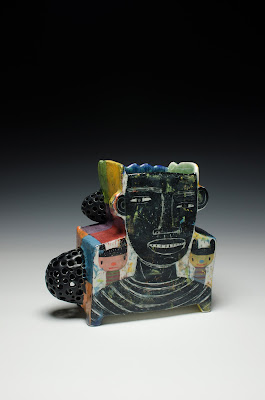 |
| No Doubt (Back), 2012 Porcelain, glaze, underglaze, oxide wash |
Snipes has a
particular fascination with duality. He is not interested in some grand
metaphysical-cosmological yin/yang sort of thing. His double vision more often
involves the exploration of that old boy-girl, masculine-feminine, “Who can
explain love?” business. A pair of cups, or matched drawings on opposite sides
of a vase, enable Snipes to depict his concerns by fashioning two portraits, complementary
yet at odds. The modeled forms frequently support the drawn imagery. A male arm
will extend along the rim on one side, with a female arm on the other. The top
of a head may be cropped by the top edge of a mug, or extend upward so that the
hairdo doubles as a kiln chimney. Snipes deploys the figures on the surface of
the objects with an acute awareness, often making them appear cramped and
contorted. Beyond that physical tension, the images of men and women, sometimes
nude, sometimes gangly and awkward, bristle with psychological tension. A
female asks, “So?” A male replies, “Never mind.” Another female says, “Ain’t no
sunshine.” A couple on a bicycle built for two say, “Scram” and “Get lost!”
This world does not suggest a sweet sitcom. It is offbeat, edgy and even
naughty.
 |
| Samo Samo 2012 Porcelain, glaze, underglaze, oxide wash |
Snipes is frequently
asked how he feels about being an African American artist who does not directly
address African American subjects in the usual identity politics fashion. His
reply has been steadfast: his treatment of duality and his interest in
psychological mystery and tension, when translated into the formal elements in
his work such as secret passages, indicate his larger concern with self-object
relationships and otherness, communication and miscommunication. The spaces in
his work serve as metaphorical allusions to the spaces between people, but also
as what he calls spaces of alchemy that indicate possibility.
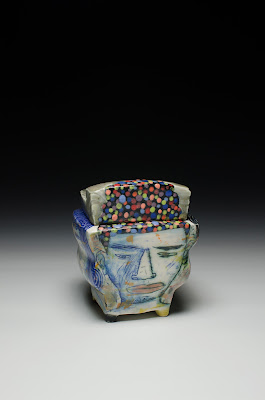 |
| Wiggle, 2012 Porcelain, glaze, underglaze, oxide wash |
Snipes is still fascinated by the
spaces in conventional pottery, where the interiors can indicate not just
physical interiority, but psychological inwardness. Now, however, he is moving
in the direction of an architectural conception of space. Although Snipes has
favored a relatively small scale, he has also started to increase the size of
his work. “I think I need to work bigger, not big,” he says, adding, “The scale
I’ve been working in is really miniature.” Snipes has always regarded scale as
a conceptual element in his functional pottery because it establishes an
intimate relationship between his art and its audience. He is not abandoning
that idea now, but he does hope to introduce a slightly more assertive, public
presence for the images and objects. And now he has begun to introduce elements
that address race directly: first, black masks held by the figures, then black
faces and—a surreal, powerful touch—popsicles with cartoonish blackface
features.
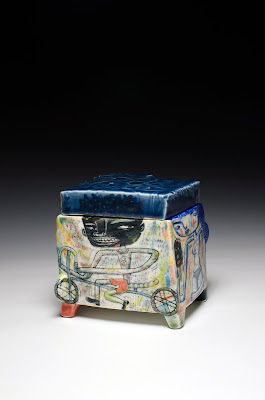 |
| Yes, No, Maybe, 2012 Porcelain, glaze, underglaze, oxide wash |
Change is afoot, yet
one characteristic of the work has not changed. The simplicity of the imagery,
like the seeming children’s style, cannot conceal the grownup seriousness and
complexity of Snipes’ art.
—Robert Silberman
Robert Silberman, Associate Professor
of Art History at the University of
Minnesota in Minneapolis, writes
frequently about craft and contemporary art.He has published articles about Jun
Kaneko, Karen Karnes, Warren MacKenzie,Nora Naranjo-Morse, Ken Price and many
other artists.
Labels:
art,
Ceramics,
Craft,
Kevin Snipes,
Pittsburgh
Thursday, January 3, 2013
Building on Ornamental History
Showcasing three solo exhibitions, Bridge 12 features the saw-pierced recycled objects of Australian metal smith, Melissa Cameron; Jacquard tapestries by New York textile artist, Betty Vera; and ceramic vessels patterned with quirky, figurative drawings by Kevin Snipes. These concurrent exhibitions reflect the high level of craftsmanship being produced by contemporary artists in the U.S. and abroad today. The exhibition is open and free to the public November 9, 2012 through March 30, 2013.
Participating artist Melissa Cameron will visit SCC to teach Building Jewelry from Found Objects on Saturday & Sunday, March 2, 3 from 9 am—4:30 pm. In this two-day workshop, offered in partnership with Construction Junction and Pittsburgh Center for Creative Reuse, she will guide students in the adaptive reuse of repurposed objects for the creation of wearable jewelry. Students will learn the skills of drilling and saw piercing to re-create the shapes and designs of their chosen found objects in their own uniquely fabricated, wearable artwork.
The following essay was written by Marilyn Zapf on the work of Melissa Cameron for the Bridge 12 exhibition at SCC.
‘ I like elements which are hybrid rather than ‘‘pure,’’ compromising rather than ‘‘clean,’’ distorted rather than “straightforward,” ambiguous rather than “articulated,’’...’ —Robert Venturi, Complexity and Contradiction in Architecture, 1966
Hybrid,
compromising, distorted, ambiguous: the patterns and elements Melissa
Cameron creates for her Recycled Series flirt comfortably with a weighty
lineage of ornamental history. Often drawing from archetypal decorative
imagery, the artist nimbly transforms her designs from two to three
dimensions.The finished pairs of
objects are at once sculptural, aesthetic, functional, and structural, and
result in a graphically striking and critically poignant contribution to a
long-standing debate on the nature of ornament.
| Tobacco Tin Set (Pin and Void Box, 2009 Painted recycled metal, mild steel, silver |
Writer
and architect Robert Venturi theorized a particular type of relationship
between decoration and a building’s façade. The play between various
elements of an edifice, he suggested, should point to or imply unity. This
preoccupation with a ‘whole’ formed through a network of parts is present throughout Cameron’s
work on display at the Society for Contemporary Craft.
Architectural
theory is useful when considering Recycled Series not only because of its overlap with
ornamental theory, but also because the artist originally trained in the
field. Her objects similarly reflect such programmatic techniques of
making and interest in structuring space.
 |
| Bamboo Plate Set (Pendant and Altered Platter), 2009 Recycled bamboo, stainless steel cable, silver |
Using
found objects Cameron engineers self-supporting systems of pattern by
piercing delicate, blueprint-like designs out of tin boxes, compact cases,
and bamboo plates. The intricate fragments are then reconstructed into new
forms that can be worn on a lapel or around the neck. Finally the
objects are displayed side by side as diptychs or triptychs. The
connection between the new structure, the Cigarette Case Neckpiece for example, and the Cigarette Case Void Pendant are still perceptible, even though both have undergone significant transformation.
| Cigarette Case (Neckpiece and Void Pendant), 2009 Recycled silver, stainless steel cable, silk thread |
The
patterns crafted by Cameron are equally as important as the forms they
create. Often the ornament is developed through derivative mutations of a
single element—in many cases a rotated, elongated, translated, mirrored,
or bifurcated quatrefoil. With its four symmetrically intersecting
circles, the quatrefoil was a common architectural motif throughout the Renaissance
and has provided a fruitful source of inspiration for the artist. The shape
can be found in both Islamic and Christian designs, such as the Florence
Baptistery Doors, and demonstrates how patterns change in meaning over
time, reflecting shifts in
cultural values and power. By employing such charged imagery, Cameron
knowingly situates her work within such a historical narrative.
 |
| Red Tin Set (Pin and Void Brooch), 2009 Painted recycled metal, mild steel, stainless steel, silver |
Venturi
would appreciate the ornamental lineage referenced in Cameron’s work
through the use of quatrefoils, scrolling acanthus leaves, and Greek
crosses. He was a proponent of pillaging the dress-up box of history to
create new decorative compositions for his buildings; combining different
parts of artistic genres to
create a new ‘whole’.
The
relationship, however, between part and whole, fragment and original, are
not always straightforward in Cameron’s work. Frequently both the found
object and the structure created from piercing into it have been
manipulated into what are arguably new entities. Take the Red Tin Set for
example—the first pair created in this series. Not only is the spacious, red, radial
structure wearable, but the remaining container becomes a brooch as well.
So although viewers are confronted with two fragments of the
original tin, they are simultaneously beholding two completely new
objects.
 |
| Cold Handle (Brooch, Altered Container), 2012 Recycled mild steel, stainless steel, vitreous enamel, silver |
‘Difficult
whole’ was the term Vernturi used to theorize the interplay between parts
of a façade and the perceived unity of a building. Cameron’s work could
also be described as such. Her jewelry is difficultly and technically
constructed, involving significant amounts of skill to achieve. Her
structural patterns are difficult to fit within previously held
conceptions of ornament as purely decorative. But ultimately the finished pieces
exemplify ‘difficult wholes’ because they successfully stage an exchange
between objects and decorative imagery recycled from the collection of
history.
Marilyn Zapf is a
freelance writer and historian of craft and design. Former Editor-In-Chief of
the blog, Unmaking Things, and recent member of the collective, Fig. 9, her
work has also appeared in publications, such as Crafts magazine.
Labels:
Bridge 12,
Melissa Cameron,
Recycled Jewelry
Friday, December 21, 2012
Poly Poly Polymer! Part 3
Polymer enthusiasts living in Pittsburgh
are lucky to have a guild right here. The Pittsburgh Polymer Clay Guild is a group of polymer clay enthusiasts who share
a love for this medium. The members meet once a month to share ideas and
techniques. They welcome everyone from tentative beginners to professionals.
This post features what some Polymer
artists living in Pittsburgh are doing.
 |
| Denise Graham |
 |
| Denise Graham |
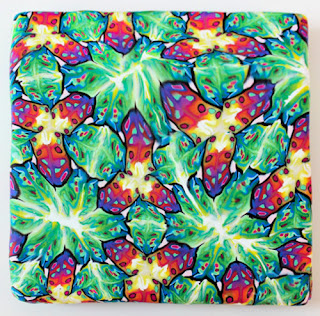 |
| Marcy Morton |
| Lesley Polinko |
 |
| Lesley Polinko |
 |
| Deanna Miller |
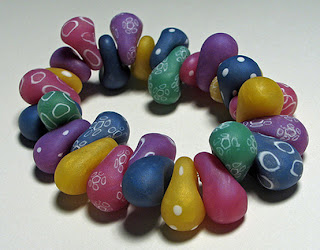 |
| Deanna Miller |
 |
| Rebecca Watkins |
 |
| Rebecca Watkins |
 |
| Selma Andrews |
 |
| Selma Andrews |
 |
| Laura Tabakman |
 |
| Laura Tabakman |
 |
| Bonnie Hagyari |
 |
| Bonnie Hagyari |
 |
| Irene Hill |
If you’d like to try your hand at Polymer
clay Laura Tabakman will be teaching two workshops at SCC:
Try it: Polymer Clay T013012 Wednesday,
January 30th @ 6-9
Polymer Necklace MM020913b on Saturday
February 9 @ 10-4
For more information or to register, call
Sherrard Bostwick at 412.261.7003 x25,
email thestudio@contemporarycraft.org or use our new online
registration by clicking here.
Labels:
Artists,
Pittsburgh,
polymer
Subscribe to:
Posts (Atom)



















